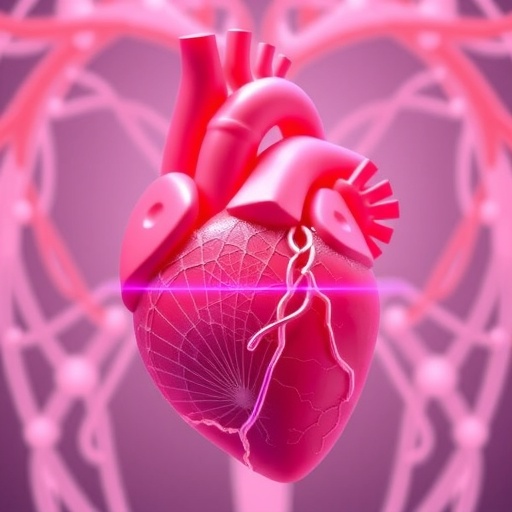WASHINGTON, D.C., Feb. 7, 2017 — Many forms of energy surround you: sunlight, the heat in your room and even your own movements. All that energy — normally wasted — can potentially help power your portable and wearable gadgets, from biometric sensors to smart watches. Now, researchers from the University of Oulu in Finland have found that a mineral with the perovskite crystal structure has the right properties to extract energy from multiple sources at the same time.
Perovskites are a family of minerals, many of which have shown promise for harvesting one or two types of energy at a time — but not simultaneously. One family member may be good for solar cells, with the right properties for efficiently converting solar energy into electricity. Meanwhile, another is adept at harnessing energy from changes in temperature and pressure, which can arise from motion, making them so-called pyroelectric and piezoelectric materials, respectively.
Sometimes, however, just one type of energy isn't enough. A given form of energy isn't always available — maybe it's cloudy or you're in a meeting and can't get up to move around. Other researchers have developed devices that can harness multiple forms of energy, but they require multiple materials, adding bulk to what's supposed to be a small and portable device.
This week in Applied Physics Letters, from AIP Publishing, Yang Bai and his colleagues at the University of Oulu explain their research on a specific type of perovskite called KBNNO, which may be able to harness many forms of energy. Like all perovskites, KBNNO is a ferroelectric material, filled with tiny electric dipoles analogous to tiny compass needles in a magnet.
When ferroelectric materials like KBNNO undergo changes in temperature, their dipoles misalign, which induces an electric current. Electric charge also accumulates according to the direction the dipoles point. Deforming the material causes certain regions to attract or repel charges, again generating a current.
Previous researchers have studied KBNNO's photovoltaic and general ferroelectric properties, but they did so at temperatures a couple hundred degrees below freezing, and they didn't focus on properties related to temperature or pressure. The new study represents the first time anyone has evaluated all of these properties at once above room temperature, Bai said.
The experiments showed that while KBNNO is reasonably good at generating electricity from heat and pressure, it isn't quite as good as other perovskites. Perhaps the most promising finding, however, is that the researchers can modify the composition of KBNNO to improve its pyroelectric and piezoelectric properties. "It is possible that all these properties can be tuned to a maximum point," said Bai, who, with his colleagues, is already exploring such an improved material by preparing KBNNO with sodium.
Within the next year, Bai said, he hopes to build a prototype multi-energy-harvesting device. The fabrication process is straightforward, so commercialization could come in just a few years once researchers identify the best material.
"This will push the development of the Internet of Things and smart cities, where power-consuming sensors and devices can be energy sustainable," he said.
This kind of material would likely supplement the batteries on your devices, improving energy efficiency and reducing how often you need to recharge. One day, Bai said, multi-energy harvesting may mean you won't have to plug in your gadgets anymore. Batteries for small devices may even become obsolete.
###
This research was funded by the European Union's Horizon 2020 research and innovation program under the Marie Sklodowska-Curie grant.
The article, "Ferroelectric, pyroelectric and piezoelectric properties of a photovoltaic perovskite oxide," is authored by Yang Bai, Tuomo Siponkoski, Jani Peräntie, Heli Jantunen and Jari Juuti. The article appeared in Applied Physics Letters Feb. 7, 2017 (DOI: 10.1063/1.4974735) and can be accessed at http://aip.scitation.org/doi/full/10.1063/1.4974735.
ABOUT THE JOURNAL
Applied Physics Letters features concise, rapid reports on significant new findings in applied physics. The journal covers new experimental and theoretical research on applications of physics phenomena related to all branches of science, engineering, and modern technology. See http://apl.aip.org.
Media Contact
AIP Media Line
[email protected]
301-209-3090
@jasonbardi
http://www.aip.org
############
Story Source: Materials provided by Scienmag




